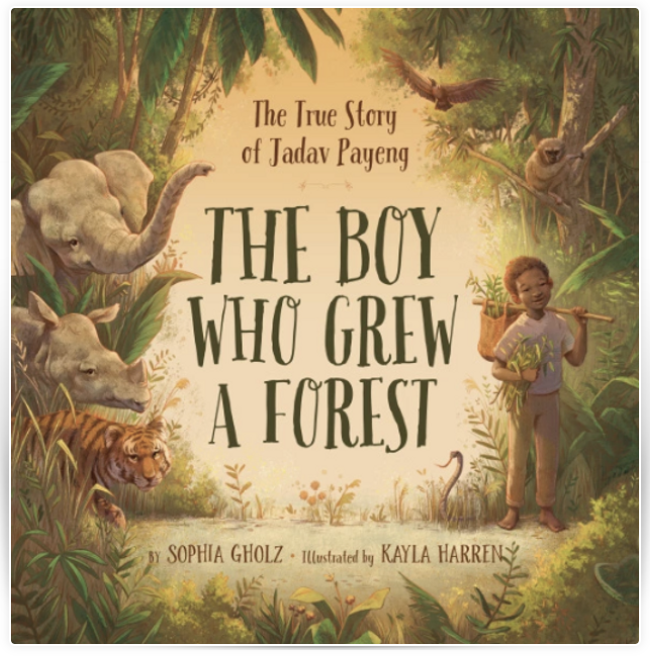In India, there is a boy who loves nature. The boy treasures his precious river-island and the wildlife who share it with him. But each year he witnesses animals displaced from loss of habitat, while his island slowly erodes away. He worries that if animals whither without trees, people will too. With nothing but a handful of bamboo saplings, the boy sets out on a mission to reclaim the land the river has taken.
The Boy Who Grew A Forest follows the true story of Mishing tribesman, Jadav Payeng, who single-handedly planted over twelve hundred acres of lush forest on a once barren island in northeastern India (Source).
Resource Creator(s)
Sophia Gholz is an award-winning children’s book author, music lover, magic seeker, and avid reader. As a child, Sophia was always a passionate reader and artist. When not reading or drawing, she could be found at the farm riding horses or out causing mischief with her brothers. As an adult, Sophia is still an avid reader, art fanatic, and mischief-maker. When she’s not writing, you can find Sophia reading, visiting schools or exploring the outdoors with her kids. Sophia grew up in Florida, went to art school in California, and met her husband in Manhattan. She’s now enjoying life back in Florida with her family (Source).
Kayla Harren graduated from the School of Visual Arts in New York City with a BFA in Illustration. Books she has illustrated include CALVIN– winner of the 2022 Lambda Literary Award, – winner of the 2019 EUREKA Gold Award, and THE BOY WHO GREW A FOREST – winner of the 2020 Crystal Kite Award. She loves animals, playing volleyball, hiking, and eating cookies with frosting. She lives in Minnesota with her husband, the incredible tattoo artist Peter Harren, and their adorable dogs. Kayla’s name is pronounced like the “kay” in “okay + “la” as in “fa la la” and Harren rhymes with “barren” or “Karen.” Her pronouns are she/her (Source).
Sustainable World Collaborative’s Analysis
We analyzed each resource in our database based on the Ways of Thinking from the Sustainability Education Framework for Teachers. We select only high-rated resources to include in the database. Below are our ratings and notes for this resource.
Systems Thinking

This resource encourages readers to collaborate with others in their communities, as readers watch Jadav’s process in consulting and collaborating with others in creating his forest. The book also highlights for students how different forces work together or against each other in fights for developing sustainable worlds. The book also shows development alongside reforestation without villainizing those working to improve living conditions, thereby simultaneously prioritizing sustainability, equity, and justice.
Strategic Thinking

This story remains contemporary and relevant. It highlights long term solutions to sustainability problems and evaluates the need to develop living conditions sustainably whilst reforesting lands as well. The resource connects the readers to better worlds of collaboration, justice, and community. It also highlights grassroots change driven by community action, positioning sustainability as a disposition to be adopted by all.
Values Thinking

This book uplifts traditionally marginalized voices through the centering of Jadav Payeng, a Mishing tribesman working to combat deforestation in his community. It also confronts bias through positioning communities as change agents and showing the potential for revolutionary change in one individual.
Futures Thinking

This resource encourages readers to think ahead about sustainability problems and solutions, incorporating quotes from Jadav Payeng throughout to share his wisdom and philosophy. The resource is contemporary and remains relevant. It also provides opportunities for students to think critically about sustainability problems and solutions by highlighting concerns associated with deforestation and conflicting interests competing around solutions.
